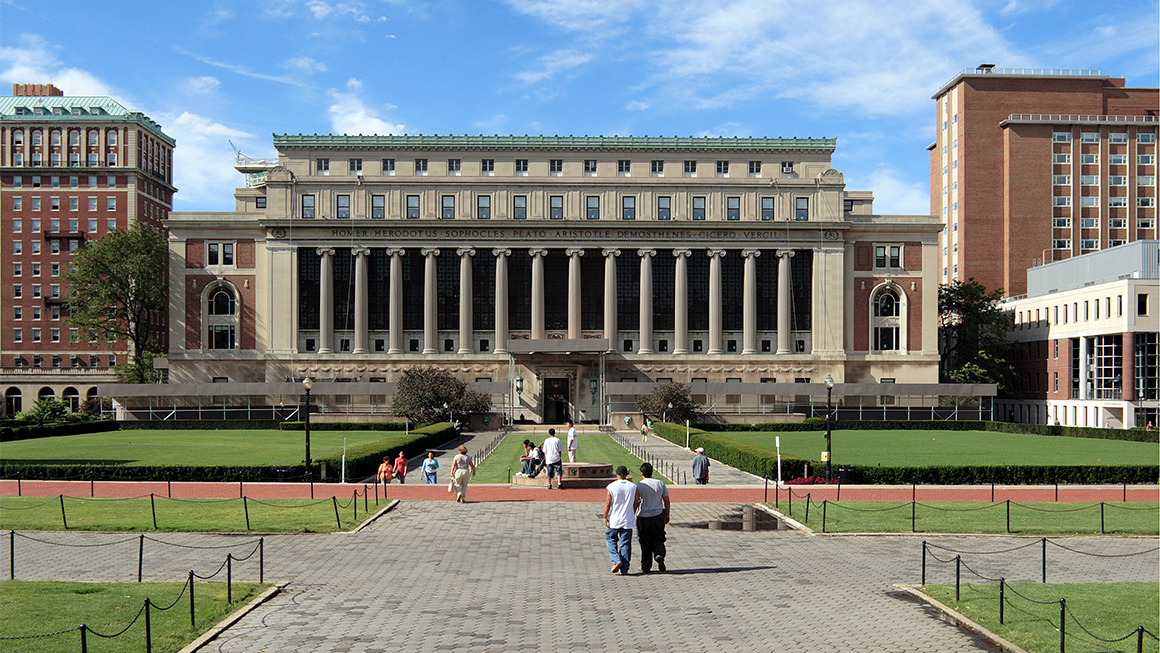
In recent months, the Trump administration has threatened federal funding cuts for colleges and universities that don’t comply with the administration’s agenda around campus protests and diversity, equity, and inclusion policies. Already, the administration has frozen federal grants at Columbia University, the University of Pennsylvania, Princeton University, Harvard University, and other prestigious institutions. Additionally, more than 90 institutions are under investigation by the administration.
But how integral are federal funds to these institutions? Using data from the Integrated Postsecondary Education Data System, I calculated the amount of revenue institutions under investigation by the Trump administration received from federal sources during the 2022–23 academic year. My analysis finds that although these institutions’ reliance on federal funds varies substantially, the loss of federal funding would have a major effect on students, research, and innovation at many of these colleges.
How much federal funding do institutions receive?
Among the institutions under investigation, the Massachusetts Institute of Technology (MIT) and Johns Hopkins University receive the most federal funding—more than 40 percent of their total revenue—while 26 other colleges under investigation receive less than 10 percent of their revenue from federal sources. At most of these institutions, federal funding in the form of research grants and contracts makes up a substantially larger portion of total funding received than does student aid.
Johns Hopkins received more than $4 billion from federal sources in 2022–23, which made up 42 percent of the school’s total revenue that year. Funding originated from the National Institutes of Health (NIH), the National Science Foundation (NSF), and the US Departments of Energy and Defense. MIT received 48 percent of its funding from the federal government, a total of $1.7 billion, during that year. Much of this funding goes to MIT’s Lincoln Laboratory, which “researches and develops a broad array of advanced technologies to meet critical national security needs.”
Many public institutions also receive large shares of their revenue from federal sources. The University of Alabama at Birmingham (UAB), University of Michigan–Ann Arbor, University of Hawaii at Manoa, and Montana State University all received more than 25 percent of their funding from the federal government in 2022–23. UAB received more than $400 million in funding from NIH in 2022 and is in the top 1 percent of NIH-funded institutions. The University of Michigan received the most federal funding among public institutions at $1.2 billion, with the University of California, San Diego, ($1.1 billion) and the University of North Carolina at Chapel Hill ($950 million) close behind. Much of the federal revenue at these public institutions comes from NIH and NSF.
Of the 90 colleges and universities in my analysis, 17 received at least 20 percent of their funding from the federal government and 47 received between 10 and 20 percent. Only 11 institutions received less than 5 percent of their total revenue from federal sources in 2022–23. All but one of these 11 colleges (SUNY at Purchase College) is in the private, nonprofit sector. These estimates represent a federal funding floor because federal student loans are not included.
What would losing federal funding mean for colleges and universities?
If institutions lose access to Pell grants or federal student loans, undergraduate students with low and middle incomes would likely pay more to attend college or go elsewhere if their institution cannot offer replacement aid. If access to graduate student loans is lost, graduate students may also shift their enrollment patterns toward other institutions or borrow more heavily from the private market.
However, these cuts could still affect students and enrollment even if student aid dollars are maintained. Federal research dollars often fund graduate students, so cuts to research funding could affect the number of students an institution can enroll. At the University of Michigan, for example, federal funding from NSF funds more than 61 percent of student researchers.
If institutions want to maintain current levels of enrollment and affordability without federal funding for students, they would need to turn to other sources. Public universities could rely on increased state investment, and both public and private institutions could raise tuition for higher-income students to replace some of the lost federal revenue. Some elite private institutions might be able to use an endowment draw to replace funds.
Without federal funds, institutions could scale back substantially on research and innovation, particularly in the health and science fields. This research has long been associated with positive societal outcomes beyond college campuses. Researchers at George Mason and Tulane conducted a study using NIH funds that made significant progress toward an HIV treatment that could eliminate the need for lifelong medications. Funding cuts could inhibit breakthroughs in health-related research studies.
Ultimately, the implications of cuts to federal funding for higher education depend on the extent of the cuts and the institutions affected. A broad funding cut across all health and science fields could make it more difficult for a university to recruit qualified faculty, whereas a narrowly targeted cut to a particular department or research center might not have the same effect on the entire university, even if it’s a similar amount of total dollars lost. Though elite private institutions might be able to make up for lost funding, public universities and those without large endowments would have fewer options.
Let’s build a future where everyone, everywhere has the opportunity and power to thrive
Urban is more determined than ever to partner with changemakers to unlock opportunities that give people across the country a fair shot at reaching their fullest potential. Invest in Urban to power this type of work.